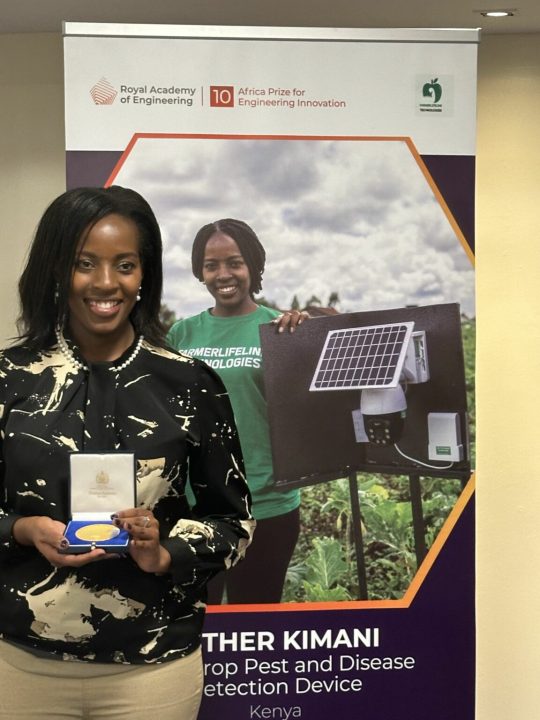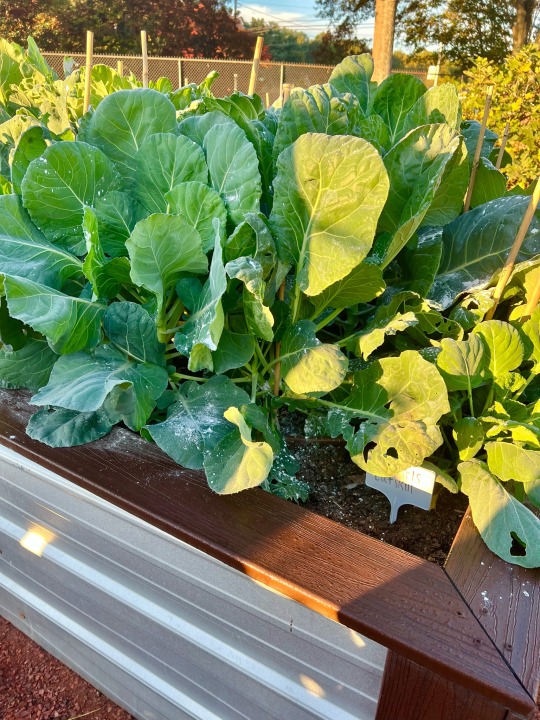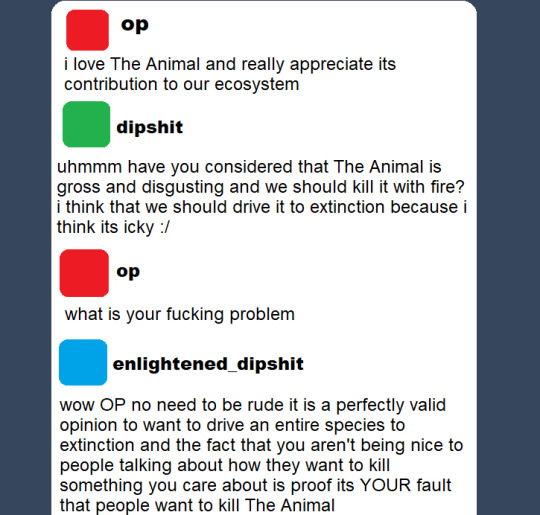#agricultural pests
Explore tagged Tumblr posts
Text
Read on Pests Causing Major Crop Losses in Agriculture
Agriculture is the backbone of food security and economic development worldwide, yet it faces so much challenges from various pests that threaten crop yields and quality. Among these pests, species such as Helicoverpa, Duponchelia, Spodoptera, and FCM (False Codling Moth) are particularly notorious for the extensive damage they cause to both staple and high-value crops. This article delves deep…
#agricultural pests#biopesticides#Crop Losses#Duponchelia#False Codling Moth#Helicoverpa#integrated pest management#IPM#pest control#pest-resistant crops.#pests in agriculture#Spodoptera#sustainable farming
0 notes
Text

a striped cucumber beetle and a northern corn rootworm beetle share a flower
0 notes
Text
fancy fella (pickleworm moth, diaphania nitidalis)
#does anyone know how to tell male vs female with these guys?#or like. why it is doing that?#best google can tell me is 'presumably pheromones' aND ALSO MAJOR AGRICULTURAL PEST#also sorry if the background looks weird the og video was very shaky so this is it stabilized#entomology#bugs#bugblr#moth#insects
87 notes
·
View notes
Text

Did you know that pesticides don’t just target harmful insects? 💀
They also:
-Disrupt soil microbes, reducing the soil’s ability to cycle nutrients and store carbon. 🦠
-Harm pollinators like bees and butterflies, which are responsible for pollinating 75% of our crops. 🐝🦋
-Impact birds and beneficial insects that naturally keep pests in check. 🐦🐜
Healthy ecosystems depend on balance.
🌍 By reducing pesticide use and adopting regenerative practices like crop rotation and integrated pest management, we can protect pollinators, soil life, and the future of our food systems. Let’s farm in harmony with nature, not against it. 🤍🌎
#soil health#soil science#soil#insects#bugs#plants#environmental education#environmental awareness#regenerative farming#regenerative agriculture#agriculture#sustainable living#sustainable farming#sustainability#organic life#organic matter#organic lifestyle#organic farming#organic#compost lifestyle#compost#vermicompost#biodiversity#ecomindset#nature lovers#conservation#pesticides#pest control#save the bees#bees
24 notes
·
View notes
Text
Recent findings that plants employ a drought-survival mechanism to also defend against nutrient-sucking pests could inform future crop breeding programs aimed at achieving better broadscale pest control. Using an advanced fluorescent biosensor (ABACUS2) that can detect tiny changes in plant hormone concentrations at the cellular scale, scientists saw that abscisic acid (ABA), usually linked with drought response, started closing the plant's entry gates within 5 hours of being infested with spider mites. Microscopic leaf pores (stomata) are important for gas exchange but are also the major sites for water loss. When there is a water shortage, plants act to conserve water by producing the drought stress hormone ABA to close their stomata.
Continue Reading.
68 notes
·
View notes
Text
today, let's talk about
✨️ aphids ✨️
specifically, when you have a basic greenhouse enclosure (aka not a commercial-built high tunnel with all the accessories).
aphids will be a problem. guaranteed. this is due to lack of airflow (like, legit airflow from wind or a very robust intake/exhaust system). i have a fan or few for my greenhouse tunnel contraption, but it's more for to help prevent stagnant air and keep the temperature uniform. i'm not at aphid-prevention level of airflow yet. and that's ok, because over the past few years i have learned the signs and what to do about them and today i am sharing with you.
✨️ step 1: finding ✨️

there is one tell tale sign that indicate you are in the presence of aphids. just like other pests, the sign you'll see is poop. for aphids, this looks almost like white and clear glitter on leaves. on the soil, it will look more like white glitter. the leaves will also be very sticky. sticky, glitter poop.
✨️ step 2: locating ✨️

ok, we found the pest poop. now to find the pests.
aphids nom on two parts of the plant: the newest growth, and under the leaves. as you see here, the very tip of this pepper plant has some babies. now when we get to the next stage, keep in mind that since the aphids are here, you already lost the game. there's no hope in this new growth unless you do the following and final step.
✨️ step 3: elimination ✨️

no no, put that neem oil down. neem oil kills any and all bugs. it does not detect which is good and which is bad. no no, dish soap and water legit does nothing except wash the poop away; ignore what pinterest and the influencers say about that combo. ok, army of ladybugs bought at the local hardware store is good, but we gotta do one more thing before we unleash them. and that's 𝓼𝓺𝓾𝓲𝓼𝓱𝓲𝓷𝓰.
legit, the only way to remove an aphid infestation, regardless of what stage of infestation ("beginning", "haha, i'm in danger", or "HELP I'M DROWING IN GLITTER POOP") the most effective way to have any hope of saving the plants is to squish the aphids. this will not happen all in one day, nor two days, or three. day three is when you unleash the ladybug army, though, and i'll explain why in a second.
day one you'll be in shook and overwhelemed, and squish to your hearts content. but you will not get every single one nor any eggs. day two will show progress. day three is now manageable, and all the subsequent days afterwards will be to ensure you got every. single. last. one. including the eggs that hatch.
✨️ final step: release the hoard ✨️
sadly i can't find my video of releasing ladybug hoards in the greenhouse in years past... so i'll just scatter ladybugs 🐞 as i type this 🐞 part out to help with the ambiance.
ladybugs and other happy 🐞 bugs love to eat aphids. why not 🐞 have them do all the work?
well, think of your favorite cake. like legit the most perfect cake you could ever imagine. mine is yellow cake with chocolate mousse frosting and sliced fresh bananas. mmmm...
now imagine 20 of those, 🐞 and they're capable of reproduction. don't ask how, but they do. at a rate of 10 cakes every 🐞 other day.
🐞 how long will it take for you to be able to eat all those cakes before they can stop reproducing??
also, keep in mind when you purchase a pack of live ladybugs, only about 2/3rds actually are alive in the packet 🐞 by the time they make it to freedom and the remaining will either die very shortly from the last bit of energy to be free and fly away or just fly away and enjoy being elsewhere because they're an 🐞 introvert who was just stuck in a bag for a month or so 🐞🐞🐞🐞 and fuck everyone and everything they just want to leave regardless of the buffet at their feet.
that will leave you with approximately 10 ladybugs. and now that 🐞 you have done all that squishing, they will keep the aphids in check and make sure they don't pop up ever again. now your plants will attempt to regrow and leaves or new growth they lost and be happy.
✨️ the end 🐞✨️
#food not lawns#gardening#home garden#homegrown#food#grow food#gardenblr#garden blog#suburban agriculture#suburban farm#pest management#greenhouse#ladybug#aphids
18 notes
·
View notes
Text

Esther Kimani, a computer programmer from Kenya, has won the UK’s Royal Academy of Engineering’s Africa Prize for Engineering Innovation. Her groundbreaking early crop pest and disease detection device wowed the judges, thanks to its remarkable ability to swiftly detect and identify agricultural pests and diseases. This innovative tool can reduce crop losses for smallholder farmers by up to 30% and boost yields by as much as 40%.
Harnessing the power of solar energy, the device employs computer vision algorithms and advanced machine learning to detect and identify crop pests, pathogens, or diseases, and the nature of the infection or infestation. Farmers receive notifications via SMS, making this an affordable alternative to traditional detection methods at just $3 per month—significantly cheaper than hiring drones or agricultural inspectors.
source
#solarpunk#solar punk#africa#ai#solarpower#agriculture#mobile tech#pest#solar power#solarpunk innovation#kenya#women#woman
17 notes
·
View notes
Text
How a Tiny Beetle Helped Save California
California’s citrus industry confronted a deadly challenge, leading to a groundbreaking innovation in pest control. Cottony Cushion Scale (Public Domain) Click to buy us a cup of coffee? We’d appreciate it! In the sun-drenched orchards of late 19th-century California, a crisis was unfolding that threatened to decimate the state’s burgeoning citrus industry. The culprit was a small sap-sucking…

View On WordPress
#Agriculture#Animals#california#citrus#entomology#environment#gardening#insects#pest-control#pests#trees
4 notes
·
View notes
Text
#good news#pesticides#natural pesticides#pest control#environmentalism#science#environment#nature#animals#roses#rose essential oil#organic#agriculture
10 notes
·
View notes
Text
1,300 Kenyan Farmers Graduate After Four Years of First-of-its-Kind Sustainable Agroforestry and Climate Action Training Program
Discover how over 1,300 farmers in Homa Bay, Kenya, are transforming their livelihoods and restoring the environment through Trees for the Future’s Forest Garden Program, a sustainable agroforestry initiative. Learn how agroforestry techniques like composting, crop rotation, and tree planting are empowering farmers in Kenya to combat climate change, increase food security, and boost…
#agroforestry in Kenya#agroforestry income generation#agroforestry projects#biodiversity conservation#biodiversity enhancement#carbon offset projects#carbon sequestration#climate change Solutions#composting techniques#crop rotation#crop yields#deforestation reversal#entrepreneurial farming#environmental sustainability#farmer training#farmer-to-farmer learning#Food security#Forest Garden Program#green jobs in agriculture.#Homa Bay agroforestry#integrated pest management#reforestation#smallholder farmers#soil carbon improvements#soil restoration#Sustainable agroforestry#sustainable farming practices#tree biomass#tree planting#women in agriculture
8 notes
·
View notes
Note
You mentioned it before so now I must know: Which bug has Gonta assigned each of his friends to and for what reason?
OKAY HERE WE GO BABY
Shuichi- blue noctuid moth! Shuichi has big moth vibes, and (according to research the author has done) this moth is sometimes associated with death :) but it is very pretty
Kirumi- orb weaver spider! Spiders are arachnids, not insects, but Gonta still likes them- and orb weavers are very delicate and organized spiders, often observed tearing down and rebuilding their web daily (i have seen this with my own eyes it rocks)
Korekiyo- praying mantis! Tall and thin, can come across as unsettling, but is sorta just minding its own business. Stares at you for too long.
Himiko- ladybug! Small and cute and round, with a similar color scheme and habit of just hanging out wherever they feel like. Also fall asleep like…. As soon as they are somewhere cold or dark. Which is endearing
Ryoma- June Bug! (June beetle) a small, round, endearing beetle in the scarab family. Are very small and resilient (despite their clumsy and self destructive flight patterns)often used to symbolize transformation? Apparently? Christmas beetle would also work for him tbh.
Kaito- firefly! (Lightning bug, fire bug, etc) while not as flashy as Kaito tends to be at first glance, these little show stoppers quite literally light up the night sky like little stars in lonely rural eras
Angie- painted lady butterfly! Maybe a little obvious, but this tiny butterfly has splattered oranges and white and black across its wings to make a vibrant pattern! They also fly around very excitedly, and are attracted to bright colored flowers like echinacea or sunflowers
Rantaro- Atlas Moth! A large, striking moth found in many parts of Asia, with beautiful eye markings and wings that bare a strange resemblance to cobra heads as well. Often used to symbolize travel and wandering
Miu- primrose moth! partially for her signature pink and yellow color scheme, partially for their pickiness when it comes to host plants, and partially because these little critters are often active day and night once they pupate and reach adulthood.
Kiibo- Pill bug! (Rolly Polly, Armadillo Bug, etc) a tiny isopod that’s more related to shrimp and crustaceans than true insects, with slate gray armored backs they have a tendency to hide behind if startled
Kokichi- Emperor Moth Caterpillar (and the moth itself) a very flashy little creature with eye designs and frills along its body to trick predators, known for that one metaphor that symbolizes life’s struggles
Kaede- Monarch Butterfly! A delicate but incredibly resilient butterfly with very vibrant colors!! Often used to symbolize strength and endurance
Tenko- Grasshopper! A high energy insect found all over the world, known for their high jumps and cute little chirps
Maki- Glasswing Butterfly! Small, delicate butterflies with translucent wings they used to blend in with their surroundings. Pollinate and lay their eggs on plants in the poisonous nightshade family
Tsumugi- Leaf Cutter Bee! While a little more plain looking than other bee species (heh heh) these bees are very unique! They cut parts of leaves to make their home, stitching together little nests for winter.
Gonta sees himself as a rhino beetle, big and silly and strong enough to protect his friends!!
#rambling#asks#long post#can you tell I almost went to school for agricultural science lol#all I know are the pollinator bugs and pest control bugs#I love bugs so much#danganronpa
9 notes
·
View notes
Text
Phytosanitary Sciences
In the field of plant health, there are several specialized sub-disciplines that focus on different aspects of plant well-being. Each of these areas has a specific focus and employs distinct techniques and knowledge to address issues related to plant diseases, pests, and other conditions affecting plants. Here are some of the key sub-disciplines:

Phytopathology
Definition: Phytopathology is the study of plant diseases caused by pathogens, including fungi, bacteria, viruses, and nematodes. Focus: Identification and characterization of pathogens, mechanisms of infection, disease epidemiology, and control strategies. Activities: Disease diagnosis, development of control methods (chemical, biological, and cultural), and development of resistant plant varieties.
Nematology
Definition: Nematology is the study of nematodes, small cylindrical worms that can parasitize plants and cause significant damage. Focus: Identification of nematode species, effects on plants, and development of control methods. Activities: Diagnosis of infestations, control of nematodes through physical, chemical, and biological methods, and research on plant resistance.
Agricultural Entomology
Definition: Agricultural entomology is the study of insects that affect plants, both as pests and in their interactions with crops. Focus: Identification of insect pests, their biology and behavior, and development of control methods. Activities: Monitoring insect populations, integrated pest management (IPM), and development of sustainable management strategies.
Plant Virology
Definition: Plant virology is the study of viruses that infect plants. Focus: Identification and characterization of viruses, their life cycles, and infection mechanisms. Activities: Diagnosis of viral infections, development of vaccines and control methods, and research on viral resistance.
Plant Bacteriology
Definition: Plant bacteriology is the study of bacteria that cause diseases in plants. Focus: Identification of pathogenic bacteria, understanding infection mechanisms, and development of control strategies. Activities: Diagnosis of bacterial diseases, chemical and biological control, and development of management practices.
Agricultural Mycology
Definition: Agricultural mycology is the study of fungi that affect plants. Focus: Identification and characterization of pathogenic fungi, infection mechanisms, and control. Activities: Diagnosis of fungal diseases, development of fungicides and cultural practices for control, and research on resistance to fungi
Phytosociology
Definition: Phytosociology studies the structure and dynamics of plant communities in relation to environmental conditions and biotic factors. Focus: Analysis of interactions between different plant species and their environments. Activities: Study of plant community diversity and composition, and their responses to environmental changes and management
Agroecology
Definition: Agroecology applies ecological principles to agriculture to promote sustainable farming systems. Focus: Integration of agricultural practices with environmental conservation and promoting sustainability. Activities: Development of sustainable management techniques and study of interactions between agricultural systems and the environment.
Plant Genetics and Breeding
Definition: Plant breeding involves selecting and creating plant varieties with desirable traits, such as disease and pest resistance. Focus: Development of cultivars with genetic resistance to pathogens and pests. Activities: Research and development of new varieties, and application of biotechnological techniques to improve plant resistance.
These areas are interdependent and often overlap, with many collaborating to address complex issues related to plant health and sustainable agricultural production.
#agriculture#plant health#Phytosanitary#pest control#plant science#agriculturalsolutions#pathology#Nematology#entomology#agroecology#botany#plants#mycology#Sustainable#agronomia#agro#agronomist#agronomy
4 notes
·
View notes
Text

10/24/23 ~ [School post] Brussel Sprouts are getting big! Have a pest, so sprinkled some Diatomaceous Earth on them.
#indoor garden#container gardening#sustainable gardening#vegetable gardening#starting seeds#grow your own food#grow organic#diatomaceous earth#organichorticulture#organic pest control#organic pesticide#brussel sprouts#eat your vegetables#raised garden beds#sustainable agriculture
11 notes
·
View notes
Text
Baby nasturtium leaves are too stinkin CUTE!!!

Nasturtiums are a beautiful, EDIBLE vining flower. They have bright orange flowers that look kinda like large pansies, with a bright peppery taste to match. They're a tasty garnish in salads, sandwiches, soups, etc!
If that's not enough, they're also great at repelling pests in the garden, so they're best planted as companions around your crops!
#botanical science#earth science#gardening#agricultural science#grow your own food#plant science#horticultural science#plant biology#permaculture#veggies#flower#nasturtium#pest control#garden facts#garden tips#seedling#spring#companion planting#plants
19 notes
·
View notes
Text
“I don’t want ants/moths/wasps/whatever in my home because they’re a nuisance/they pose a health and safety threat to myself and my family/they can potentially damage the structural integrity of my home if left unchecked and so I will take steps to exterminate them within my home and prevent them from coming back”
and “Ants/moths/wasps/whatever are an important part of the ecosystem, the disappearance of even a portion of them would have undesirable consequences for many other species, and we should limit our interventions on nature as much as possible since we don’t know what havoc we could unintentionally wreak”
are two sentiments that can and should exist simultaneously
Some municipalities spray pesticides over a very wide area to reduce certain insect populations (like flies or mosquitos) as a preventative measure for public health reasons. And of course we use pesticides in agriculture to prevent insects from consuming our crops. I think it’s fine to debate the pros and cons of such measures and weigh the environmental harm against the human benefit. Maybe it’s a good idea, maybe it isn’t. There are reasons other than “Ew bugs icky!” for why widespread pesticide use may be the best option even with the environmental harm they cause.

POV you made a popular post about insects
31K notes
·
View notes